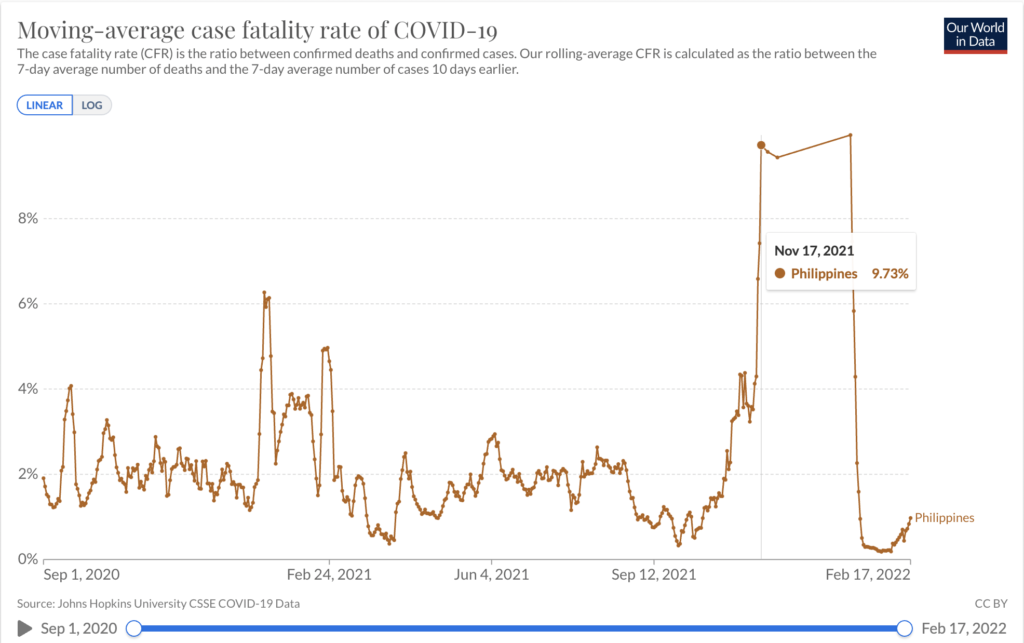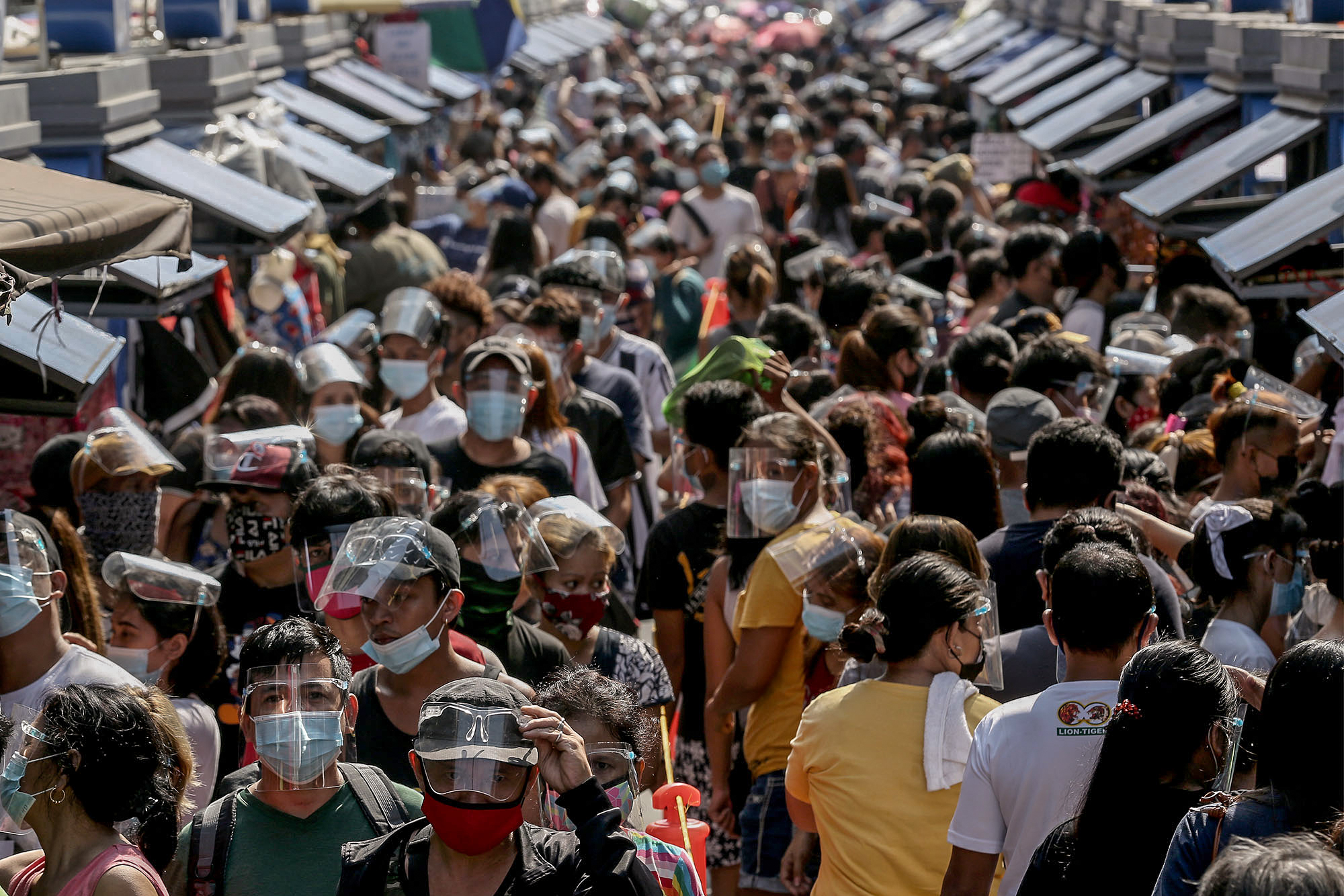This question is difficult to answer because as of this writing, the government has not yet released a roadmap on how we can get out of the state of emergency.
Currently, the conversation is that the government wants to transition the Philippines to a “new normal” by March 2022. What this means, and how they intend to do it still remains unclear. Perhaps the closest we can consider as an exit plan would be this February 16, 2022 article published by the Philippine Daily Inquirer:
Here is the “road map” according to Presidential Adviser Vince Dizon:
- The inoculation of the nearly three million unvaccinated senior citizens and children, especially those aged 5 to 11, to allow them to return to school.
- Increasing the number of people getting booster shots.
- Increasing vaccination rate in the regions to atleast 70%, with special focus on Mimaropa (Mindoro, Marinduque, Romblon, Palawan) Bicol, Soccsksargen (South Cotabato, Cotabato, Sultan Kudarat, Sarangani, General Santos City) Caraga and Bangsamoro regions.
- Vaccination of atleast 90 million individuals by June 2022.
- Adherence of business establishments to the safety certification.
It must be noted, however, that authorities have not yet placed Metro Manila to Alert Level 1 despite meeting all of the requirements above, because according to the Department of Health, they observing how the lack of physical distancing and crowding in recent campaign sorties would affect the case rates in the next weeks. This essentially means that even if all regions meet the targets of the “road map” above, the State of Emergency cannot be lifted if the case rates are high.
Now, knowing the experiences of highly vaccinated countries, where cases and COVID-related deaths continue to increase, do you think that the Philippine government will lift all its restrictions any time soon?
- Worldwide data from 185 nations prove that the highest death rates are in the most vaccinated countries; we are now in a pandemic of the vaccinated
- Big Data Analysis of 145 Countries Shows Vaccine Deployment Led to Increase in COVID Deaths and Cases
In a February 16, 2022 article, the Malacañang says that achieving the 70% vaccination target which would end the acute phase of the pandemic would be “a matter of choice”.
Our question is: how does the government define the “acute phase of the pandemic”? And who is included in the 70%? Does in include the very young children who are in no way benefitted by COVID vaccination?
- No Need for Vaccines: Children’s Immune Systems Primed and Ready for SARS-CoV-2
- Thousands of Physicians and Scientists Reach Consensus: Natural Immunity Works, Children Do Not Need COVID Vaccination
Despite the ramp-up in vaccination, the cumulative case fatality rate (CFR)1 Also read The tale of two fatality rates to understand the difference between CFR and infection fatality rate (IFR). in the Philippines has remained stable since August 2020. This means that vaccination made no difference in preventing COVID deaths.

Meanwhile, if we look at the 7-day moving average for CFR in 2021 and compare it with 2020 before the vaccines were even rolled out, we will notice the steep increase in COVID deaths in recent months, particularly from November 2021 to January 2022, when the government’s vaccination drive was at its peak.

Are health authorities looking at our hospitalization and death data? Are they even looking at correlations between vaccination and COVID cases and deaths in an attempt to measure the safety of these vaccines? Or has our health experts forgotten all best practices in medicine, and are they solely using vaccination rate as the indicator of success?
We agree the end of this pandemic is a matter of choice. But the choice lies, not on citizens getting vaccinated, but on our leaders developing the capacity to think logically and scientifically. If the government wanted to end this pandemic, it could very easily do so. After all, South Africa has been able to remove a majority of its restrictions, and re-open schools as normal, despite its low vaccination rate.
Why can’t we, if the government truly believe that the COVID vaccines were truly effective? What is the government afraid of when almost half of the country has already received their COVID vaccines?
Also, if we look at how Denmark decided that COVID is no longer a critical threat to society, their consideration was not just their vaccination rate, they also looked at their own data and created healthcare-centered policies that would ensure that COVID will remain manageable.
Meanwhile, Singapore made it a point to stop the daily monitoring of COVID cases in a bid to stop panic among its citizens. Instead of obsessing on case rates and vaccination, early treatment protocols were implemented, and high-risk patients were prioritized. Vaccination of children was not a key requirement to the opening of classes.
Will all these real-world experiences be considered in the Philippine government’s “exit plan”? We sure hope so.
Resources
- 1Also read The tale of two fatality rates to understand the difference between CFR and infection fatality rate (IFR).

Hi, Thanks a lot for being unafraid of making informative content that we can read and share with other people. Hopefully, more people will wake up to the fact that they are being tricked by the Gov’t regarding the V mandates. God bless you all.
Great to know that there are people who find the content we publish useful! God bless us all. 🙂
Keep up the good word and work. God shield, guide strengthen you all in this endeavor to bring truth and proper information to as many.
Thank you Sarah! May we all be protected from those who intend to do us harm. May the light of truth shine upon us all.
May I know what happened to the “move” to sue the government for mishandling the COVID-19 malady?
Btw, do I need a new FB account to access your website?
Thanks😊
Hello Danilo, unfortunately, we are not at liberty to respond to your question at the moment, but you will know soon when we are.
Re:FB, we don’t require a facebook account to access the website. Please let us know if you are receiving any popups/barriers to accessing the website contents.